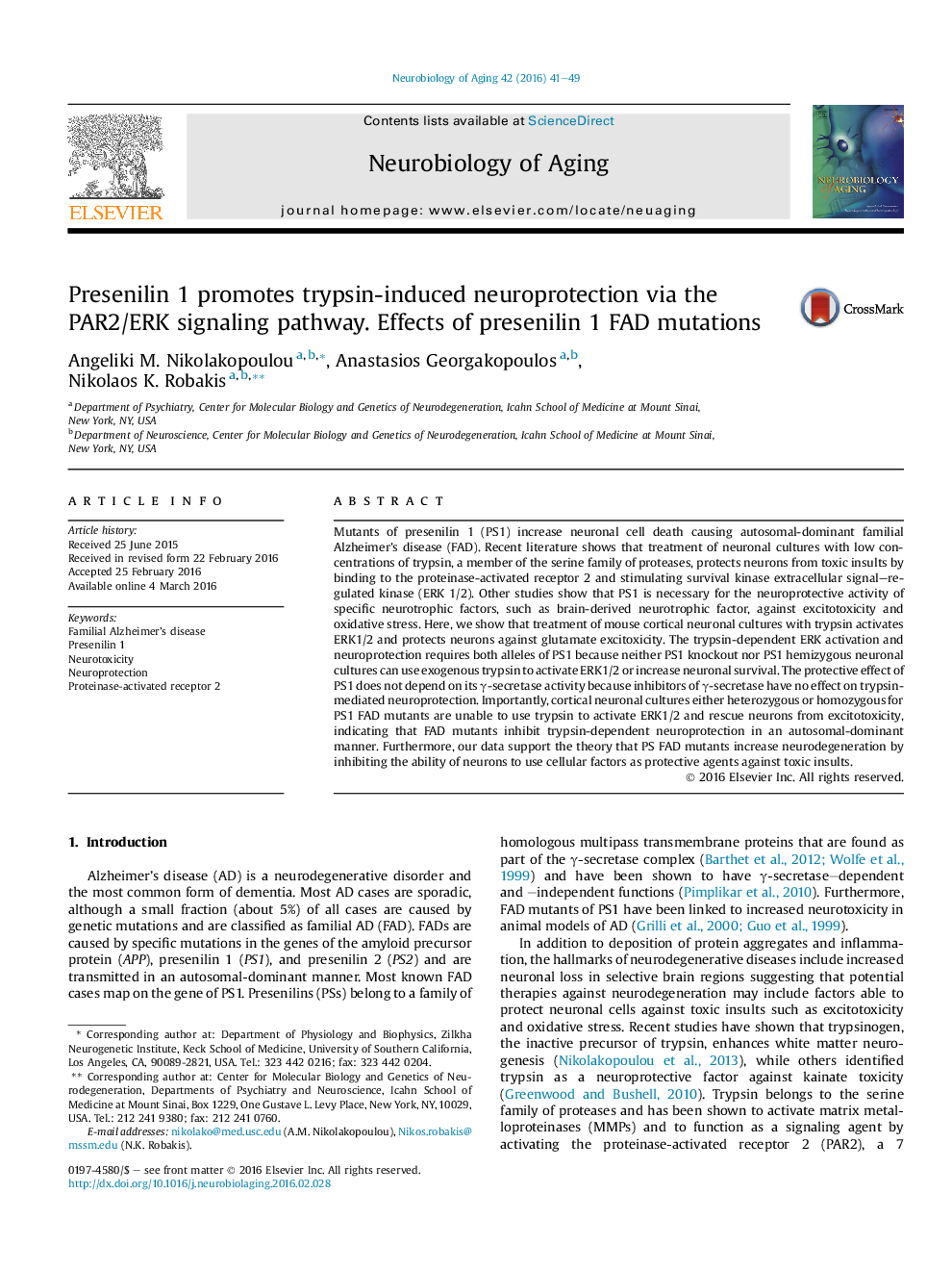| کد مقاله | کد نشریه | سال انتشار | مقاله انگلیسی | نسخه تمام متن |
|---|---|---|---|---|
| 6803449 | 1433542 | 2016 | 9 صفحه PDF | دانلود رایگان |
عنوان انگلیسی مقاله ISI
Presenilin 1 promotes trypsin-induced neuroprotection via the PAR2/ERK signaling pathway. Effects of presenilin 1 FAD mutations
دانلود مقاله + سفارش ترجمه
دانلود مقاله ISI انگلیسی
رایگان برای ایرانیان
کلمات کلیدی
موضوعات مرتبط
علوم زیستی و بیوفناوری
بیوشیمی، ژنتیک و زیست شناسی مولکولی
سالمندی
پیش نمایش صفحه اول مقاله

چکیده انگلیسی
Mutants of presenilin 1 (PS1) increase neuronal cell death causing autosomal-dominant familial Alzheimer's disease (FAD). Recent literature shows that treatment of neuronal cultures with low concentrations of trypsin, a member of the serine family of proteases, protects neurons from toxic insults by binding to the proteinase-activated receptor 2 and stimulating survival kinase extracellular signal-regulated kinase (ERK 1/2). Other studies show that PS1 is necessary for the neuroprotective activity of specific neurotrophic factors, such as brain-derived neurotrophic factor, against excitotoxicity and oxidative stress. Here, we show that treatment of mouse cortical neuronal cultures with trypsin activates ERK1/2 and protects neurons against glutamate excitoxicity. The trypsin-dependent ERK activation and neuroprotection requires both alleles of PS1 because neither PS1 knockout nor PS1 hemizygous neuronal cultures can use exogenous trypsin to activate ERK1/2 or increase neuronal survival. The protective effect of PS1 does not depend on its γ-secretase activity because inhibitors of γ-secretase have no effect on trypsin-mediated neuroprotection. Importantly, cortical neuronal cultures either heterozygous or homozygous for PS1 FAD mutants are unable to use trypsin to activate ERK1/2 and rescue neurons from excitotoxicity, indicating that FAD mutants inhibit trypsin-dependent neuroprotection in an autosomal-dominant manner. Furthermore, our data support the theory that PS FAD mutants increase neurodegeneration by inhibiting the ability of neurons to use cellular factors as protective agents against toxic insults.
ناشر
Database: Elsevier - ScienceDirect (ساینس دایرکت)
Journal: Neurobiology of Aging - Volume 42, June 2016, Pages 41-49
Journal: Neurobiology of Aging - Volume 42, June 2016, Pages 41-49
نویسندگان
Angeliki M. Nikolakopoulou, Anastasios Georgakopoulos, Nikolaos K. Robakis,